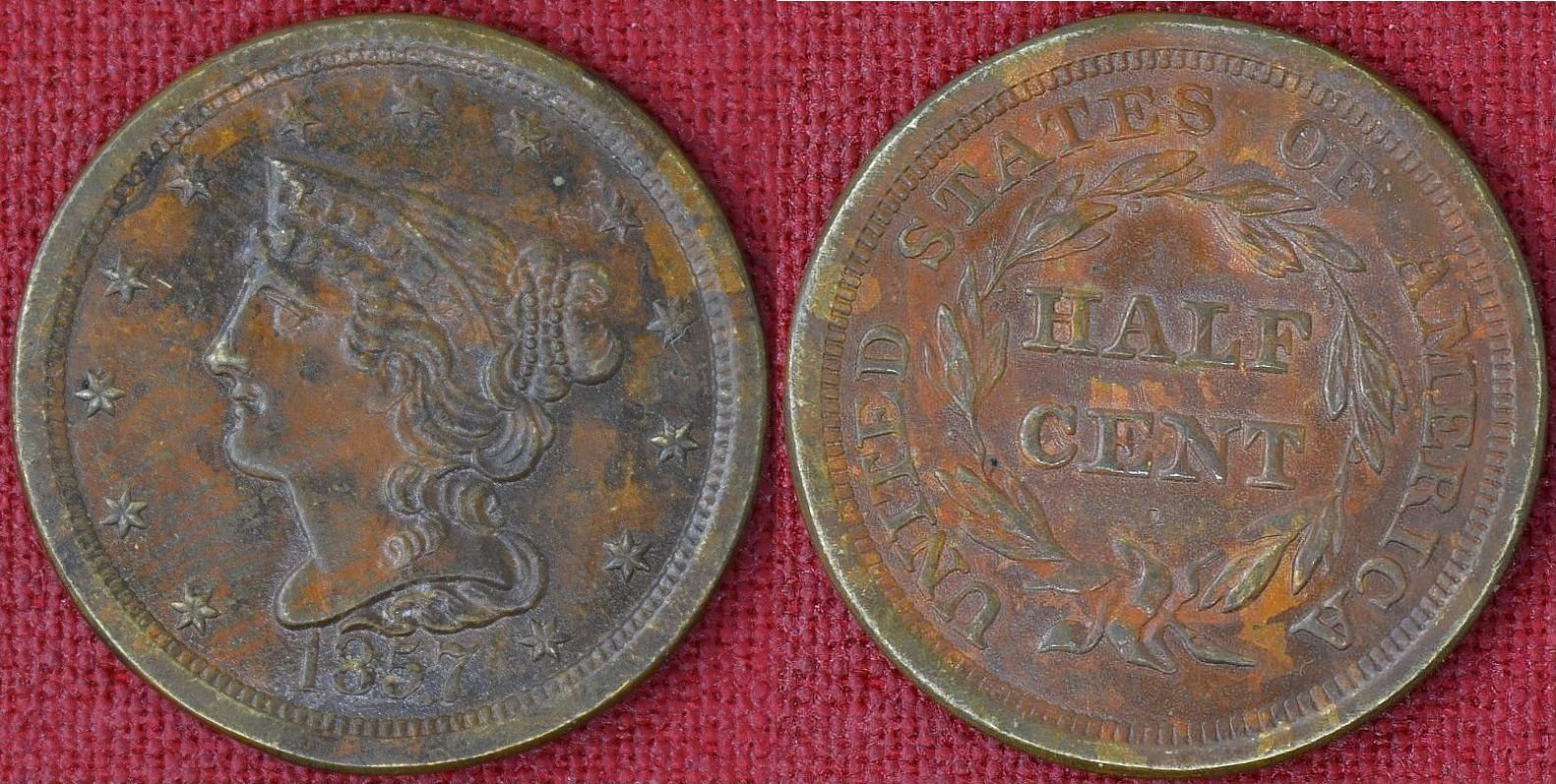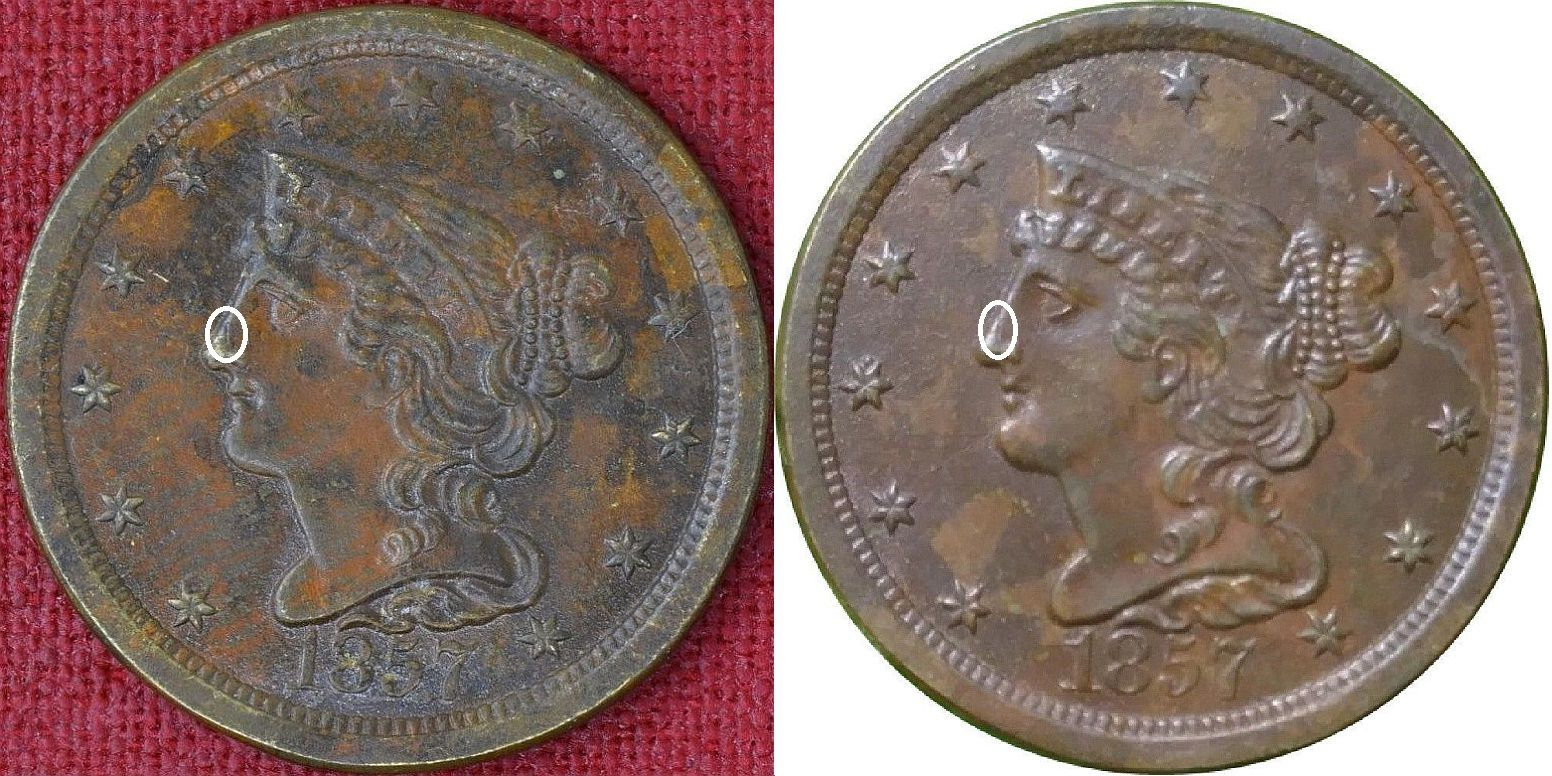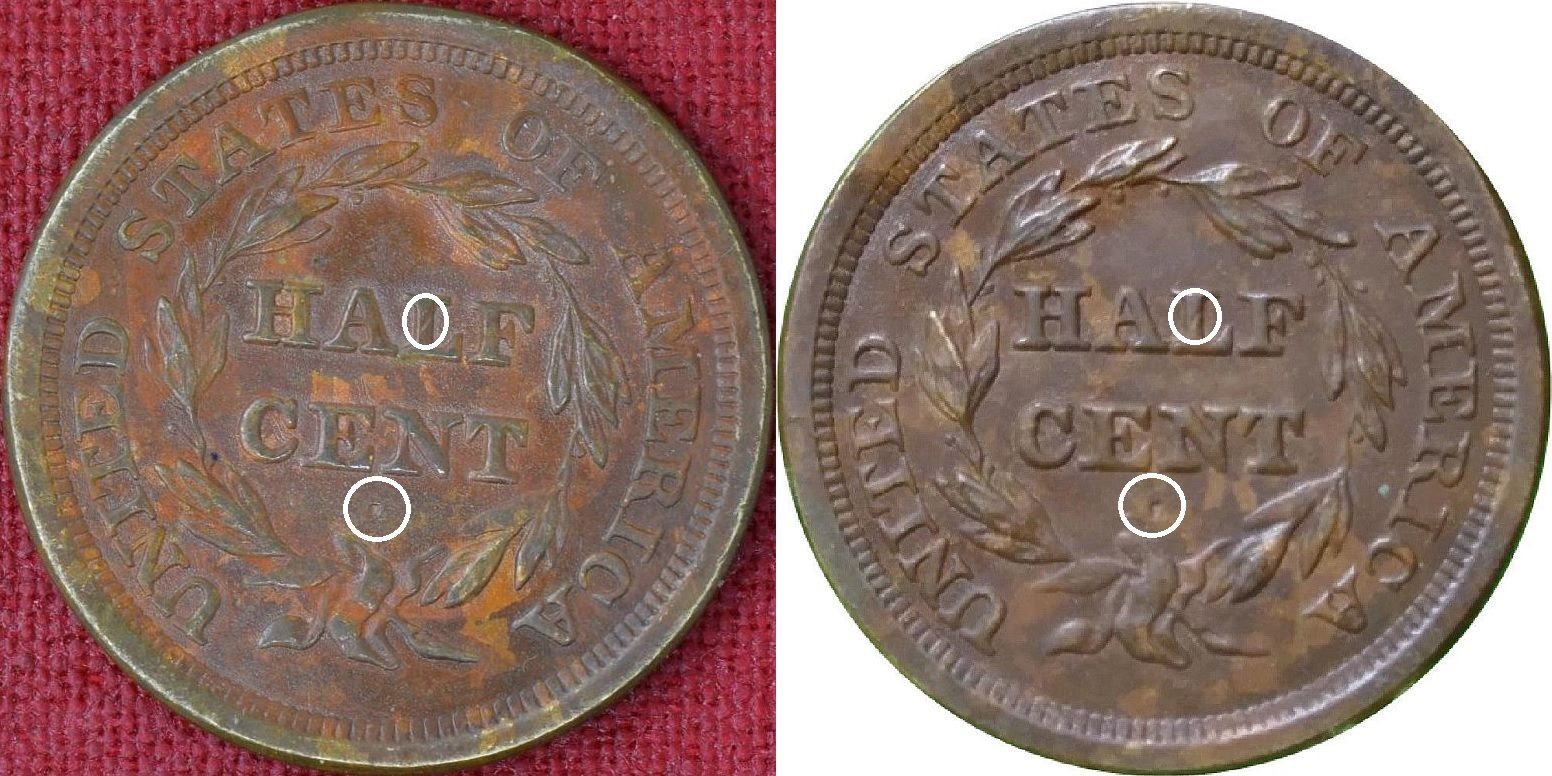New suspect half cents listed on the internet.
 burfle23
Posts: 2,600 ✭✭✭✭✭
burfle23
Posts: 2,600 ✭✭✭✭✭
1st one was suspicious due to the surfaces/ appearance but looks like a "weathered" 1857 C-1 half cent:

2nd listing today of an example with a similar "look":

A couple of matching (non die state) marks:


Thoughts?
5
Comments
Counterfeit.
Yep, that is usual look for a "weathered counterfeit." Historically real thing as not been that easy sell.
The open listing was removed..
Are weathered counterfeits worth more than unweathered counterfeits? It would seem the time and attention to age a fake should be rewarded with a higher declaration of value.
Not really- just done to hide any identification marks.
Nice catch... glad it was terminated... Cheers, RickO
In doing some more digging it looks like the 2nd one came from the same seller as the 1st example, sold in early March (same toning on both):
Bogus
It's sad to see these counterfeited. These were fun, historic pieces to collect and now you have to be super careful.
IMO, one day, the fakes will be so good and so inexpensive that all of us will be able to hold a beautiful, frosty, 1794 dollar w/silver plug or any other vintage coin we desire. Hopefully, before this prediction comes to pass, every true authentic coin of any value will be "fingerprinted" in some way so they will still be differentiated and collected by the "purists" seeking authentic and historical objects.
I can tell you that holding a state-of-the-art AU 1796 Flowing Hair dollar or 1873-CC Trade dollar that fooled 95% of collectors and dealers before it was finally detected will scratch the collecting "itch" for many - including me. That is unfortunate but true.
PS I cannot wait for some company to produce a State-of-the-Art collection of counterfeit, pre-1900 gold coin "poker chips" with a deep gold plating and the heft and appearance of the real things! I'll raise you $10 (clunk-ping) and call you.
cannot wait for some company to produce a State-of-the-Art collection of counterfeit, pre-1900 gold coin "poker chips" with a deep gold plating and the heft and appearance of the real things! I'll raise you $10 (clunk-ping) and call you. 
Weathered? Looks more like results of chemical treatment(s).
RMR: 'Wer, wenn ich schriee, hörte mich denn aus der Engel Ordnungen?'
CJ: 'No one!' [Ain't no angels in the coin biz]
PCGS TrueView and HA archive photos are great for this "fingerprinting." It would be great if Stack's and ATS could do the same.
I think it will take more than an image. There are many instances where counterfeits are made from a transfer die. The fakes pick up the marks. BTW, this was true many decades ago too. As far as color, spots, and stains...we'll see about that in the future.
My understanding is that transfer die pieces exhibit the same marks as the originals as you say, and thus can be identified via photos. Of course, having more than one to compare marks is useful. If the original is destroyed or cannot be used for identification, identifying a transfer die copy may be difficult.
@Zoins said: "My understanding is that transfer die pieces exhibit the same marks as the originals as you say, and thus can be identified via photos.
Exactly!
I mentioned that because you wrote "I think it will take more than an image." Having more than an image can help, but if the marks are consistent, they may be enough.
Exactly...the genuine and the fake will look IDENTICAL in the image. Give it just a few more years! Oh, and I forgot to mention as I'm just guessing, the plastic slabs are being counterfeited and it should be even easier to counterfeit a True-View. This may not fool anyone as knowledgeable as you or a TPGS dealer but I don't even know how to look up a true view. I'll bet there are thousands of folks like me out here.
I'll bet there are thousands of folks like me out here.
AFAIK, The TPGS are working extremely hard to stay ahead of the crooks!
Generally, I agree with you. The fakes are coming and I'm not sure what can be done for the broad hobby. Even Dan Carr's pieces are being counterfeited.
Having an image of the actual "source coin" aids in calling the others counterfeit.
Not to hi"Jack" my own post, but the 1798 "S-158" fake is a good example- source:
Family: